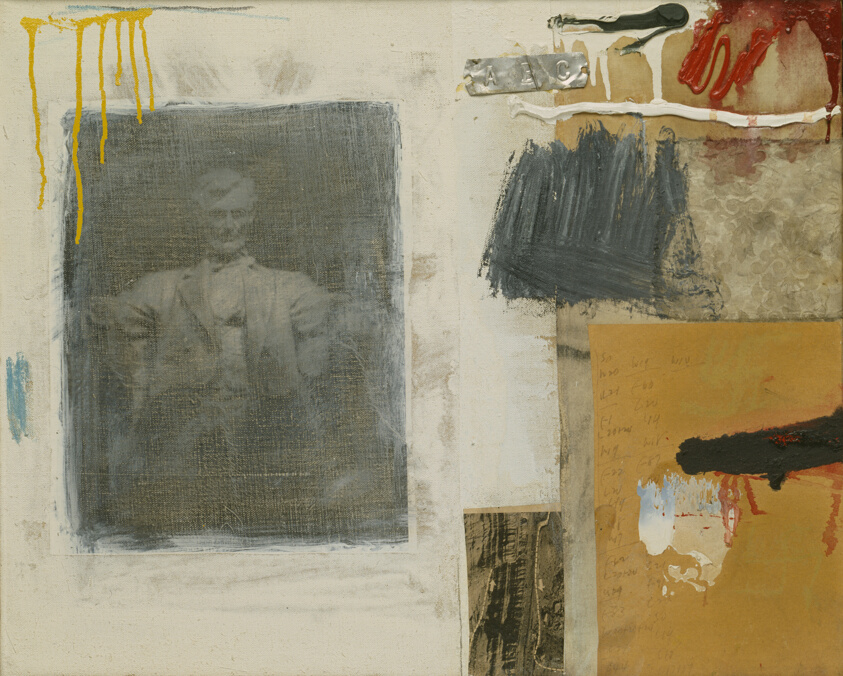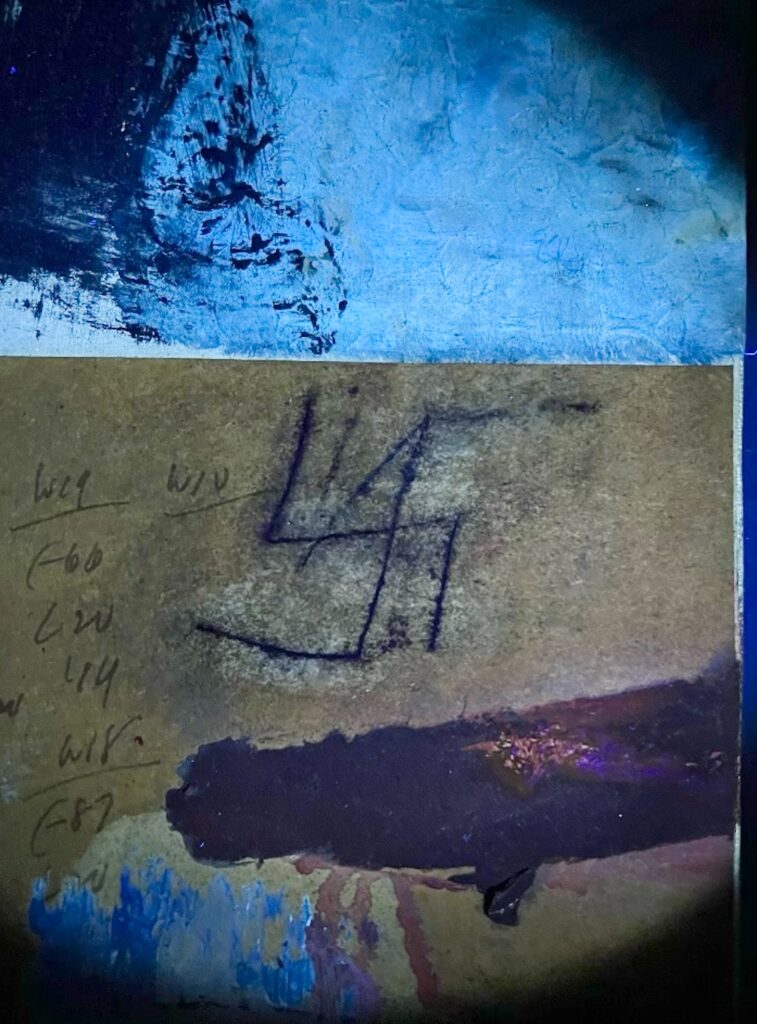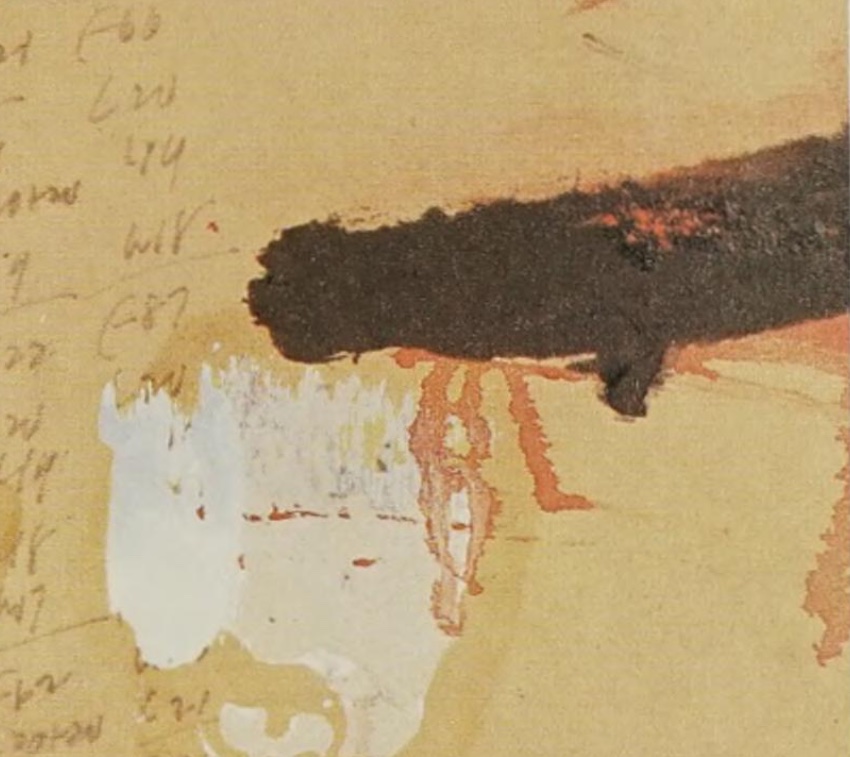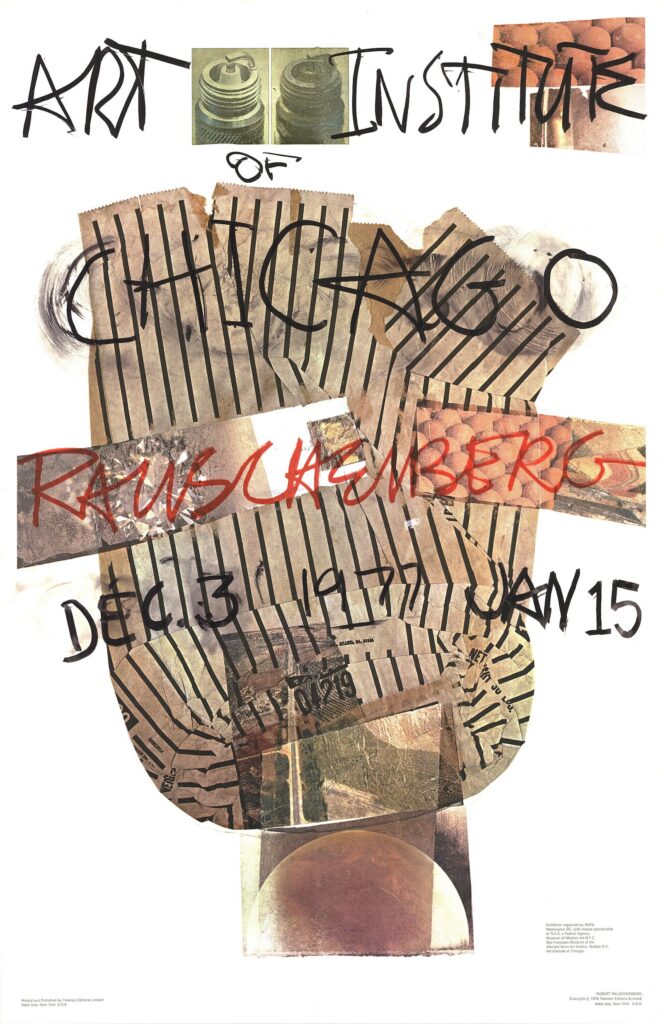
[The anti-Semitic defacement of Lincoln, the 1958 Robert Rauschenberg combine sold last week at Christie’s, was first reported yesterday in Kenny Schachter’s post-auction recap on artnet. Schachter said Lincoln was “infamous” for the racist vandalism that took place at some as-yet-unconfirmed point, when the work was owned by the Art Institute of Chicago. IYKYK, but so far, I’ve found no news or art text mentioning it. So what happened, and when?

As Shachter’s file name of a UV detail image from the Christie’s condition report [above] implies, it looks like someone—who may have wrongly assumed Rauschenberg was Jewish?—gouged a swastika into the painting. Two, actually.
Since that is a 5×9-in. sheet of paper collaged onto the painting, and the canvas behind shows no sign of distress or repair, I suspect the swastika was drawn on with a pen or marker, not gouged. [Or was it?? Literally as I typed this, I zoomed into the top center section of white paint, outlined in single black brushstrokes, and see discolorations and cracks. Was this discarded painting on the canvas Rauschenberg salvaged actually conserved, too? Eh, maybe not. I flipped and lined them up, and the nazi action all took place below and to the left, in that green section.]

At first I was intrigued by this hidden painting on the back of Lincoln. Now it’s the hidden attack on the work, and the aftermath. From the images of it, at least, Lincoln certainly seems to be in better shape now than in the Art Institute’s day, which is wild. [The museum sold it to Gerald Fineberg in 2015; his estate sold it last week.] Beginning in at least 1999 [the Walter Hopps Guggenheim retrospective catalogue], through 2005 [Schimmel’s MOCA catalogue] and on the Collection site today, Lincoln is shown with two ghostly swastikas on the lower, right corner, above and below the dark, horizontal brushstroke.

It does look like the vandalism is not there yet in the 1980 catalogue Bryan Hilley found from the Kunsthalle Dusseldorf, though. Lincoln was shown in the Art Institute’s incarnation of the Smithsonian’s Rauschenberg retrospective in 1978, and then not again until Dec. 1993, when it was on view for six months. It was on view from 1997 through 1999, too, so a 1999 picture of it repaired would probably have to date from before 1997. But assuming the history’s complete, that’s two moments, in 1977-1978 and 1994, when it might have been defaced, and two windows, of 15 and three years, respectively, in which it could have been repaired. If it happened while Lincoln was on public view, my guess is, it was in the winter of 1977-78.

With multiple publications and exhibitions during his lifetime, Rauschenberg must have known of the damage, and the repairs. [Or not? There are files in the Robert Rauschenberg Studio Archives from the Art Institute of Chicago with dates from 1972-1989 but, it turns out, absolutely nothing about the Lincoln incident.] If he even knew, and what he said or thought about it is not known. Now that I can’t unsee the damage, though, I have to think others did, too, and let the work be shown and published with the traces of its past attack visible.
Previously: Lincoln, Blogged
